|
We had our final night walk of the season on Saturday and it was another successful one! We were able to witness a straggler from one nest and then witness the major emergence of two other nests! It was like watching a pot boil as the hatchlings took their sweet time. Once they were ready, it was such a joy to watch them all crawl out together and make their quick dash to the ocean. On our way back, we saw adult tracks but this turtle already came and left! Too bad we missed seeing the adult but still so happy to have had a fun and turtle-filled program. The following morning we documented not one but two new nests! The other nest was laid by a turtle that emerged early in the morning as she had long tracks out and back to the ocean. There were 6 total nests that emerged as well. The nest we missed seeing is documented as 346 on the state park beach. That nest along with the other nest laid was in need of relocation. Nest 346 had 113 eggs and 347 had 144 eggs! See below for photos from dawn patrol.
0 Comments
Blog Post By: Dalton Moore, Sea Turtle Intern
Recently the interns and sea turtle specialist had the privilege of taking a behind-the-scenes tour of Charleston Aquariums Turtle Hospital. As it should be known, all species of sea turtles are either listed as endangered or threatened due to the increasing concerns that affect their populations. To protect these populations, the Hospital is in place to aid injured and sick sea turtles as well as the Department of Natural Resources. The Hospital has three mottos that the staff goes by to ensure safety and provide knowledge of all sea turtles. Rescue, Rehab, and Release: When a stranded or injured sea turtle is found, SCDNR brings the animal to the Care Center. After the turtle has arrived, veterinarians will determine what the turtle is suffering from, whether it be predation, boat strikes, debilitated turtle syndrome, etc. The patients are then given fluids, vitamins, and antibiotics to help relieve the problem or solve the issue, dependent on the subject. Surgical procedures such as x-rays, ultrasounds, or CT scans may also be performed with certain conditions. Rehabilitated sea turtles will then be released back to the deep blue with the intent to become successful members of the sea turtle population. Research and Conserve: The Care Center also works with the McNair Center for Sea Turtle Conservation and Research. This group serves as a research facility to continue to watch all 21 years of patients that have gone through the Turtle Hospital. Educate and Inspire: The center is also encouraged to teach kids and adults about the conservation of sea turtles. The Hospital and Zucker Family Sea Turtle Recovery ensure that the rehabilitation of all sea turtles is visible to all guests that visit the Aquarium. The Hospital supplies interactive stations that enable guests to retain knowledge about sea turtles, causes of sea turtle stranding, etc. Tablets are also shared next to all patients within the Care Center to tell their unique stories and stages of recovery. Lastly, there is a window that gives you a peek of the surgical suite where guests can view medical procedures performed on sea turtles. As soon as we stepped out onto the beach, our intern, Sarah, notified us that she saw hatchlings! There were 3 hatchlings that were stragglers from a nest that had previously emerged. We were so excited to see sea turtle activity already.
After a long trek to the inlet, there was no other sightings. However, at the inlet, Sarah radioed us that she saw a divot in one of the nests but saw no tracks. We did not have to wait long and the nest started to "boil" as the majority of the hatchlings crawled to the surface and made their dash to the ocean. The following morning our dawn patrol team documented 7 new nests emergences! See below for the beautiful sunrise captured. Our Tuesday night walk was a success! Shortly after we stepped onto the beach we had a nest emerging! We made it just in time as the hatchlings started making their mad dash. We continued to the inlet with the hope of also seeing a nesting sea turtle. We did not see an adult sea turtle but we did see bioluminescence, the big dipper and shooting stars!
The next morning, our dawn patrol team documented 8 nests that emerged overnight and 1 false crawl. Blog Post By: Christine Segnari, Sea Turtle Intern
Now that it is the end of July, exciting events are happening—public nest inventories! While the complete nesting season (including laying nests and nests hatchings) lasts through October, female Loggerheads will stop nesting near the beginning of August. Through Edisto Beach State Park and South Carolina DNR, we conduct public inventories. During these public inventories, we will sort through multiple nests that hatched 3-5 days ago. We wait 3-5 days to allow as many turtles to hatch naturally as possible. There are 5 categories that we sort that nest into during inventories: alive, dead, pipped, unhatched, and hatched. Live hatchlings found deep within the nest will be taken out of the nest and put into our inventory bucket. We will safely release these hatchlings into the ocean. Crawling out of the nest is extremely important for their development, so we will allow them to safely crawl into the ocean. However, if live hatchlings are found as soon as we begin digging into the nest, we will cover up the nest and wait another 3-5 days. Dead hatchlings (turtles that fully hatched out of their egg but did not survive) can result from a variety of circumstances. Sometimes they are not strong enough to get out of the nest, they might have crawled into an area of the sand that did not have air pockets, etc. Pipped hatchlings refer to any hatchings that are underdeveloped and are still trapped in the egg with their upper body sticking out. Unfortunately, most of the time these hatchlings have died; however, we do occasionally find live pipped hatchlings. In this case, we will cover the hatchling in sand as we continue the inventory. At the end of that nest’s inventory, we will rebury that hatchling in the nest and put up all the signage again. That way, the hatchling has the best chance at a successful natural emergence. Unhatched eggs are eggs that are still completely intact. Most likely, these eggs were unviable and were not able to form into turtles. Hatched eggs are the remains of the shell broken by the hatchling as it was trying to get out of the nest. In order for us to categorize it as a hatched egg, there must be 60% of the broken eggshell remaining or more. I completed my first public inventory a few days ago, and it was an incredibly exciting experience. Over 100 people came to watch the inventory! We were able to educate them on Loggerhead nesting practices and show them some hatchlings. Though Laughing Gulls (one of the hatchling’s predators) were present, we were able to get all the hatchlings into the ocean safely. Once we finished with the inventory, we were lucky enough to see a boil over (when the hatchlings make their emergence out of the nest) at a nearby nest! The turtles evaded us on our Saturday night walk. On our way down to the inlet, there were two nests that had already come and gone. There were no turtle sightings on the way back either.
The following morning we documented 1 new nest, 1 false crawl and 3 nests that emerged over night. Along with the new activity, the dawn patrol team conducted 5 nest inventories and installed another light screen. The morning started out stormy but thankfully cleared up so the team could complete all of the dawn patrol tasks. We had an eventful night walk on Thursday with both hatchlings and an adult sea turtle seen! Our intern, Christine, was leading the walk tonight and was up ahead as the scout. She was notified by some campers that there was a sea turtle nest emerging! As we arrived the hatchlings were already making their run for the ocean. As it was a very dark night and the moon had not yet risen, the hatchlings were having a difficult time orientating themselves. By the time we left, all of the hatchlings were able to make their way to the ocean.
On the way back to the office building, there was a nesting sea turtle ashore! She had already finished laying but was in the process of covering her eggs. We watched as she took her time to make sure those eggs were protected. All in all it was another late but rewarding night! The following morning, the dawn patrol team marked that nest as 338 on our state park beach. In total they documented 4 new nests, 1 false crawl and 3 nests that emerged. We are nearing closer and closer to our record season! Blog Post By: Dalton Moore, Sea Turtle Intern
Loggerhead hatchlings are omnivores meaning they consume both animals and plants. Hatchlings will eat a variety of prey, including life-like sargassum seaweed, crustaceans, mollusks, hydrozoans, jellyfish, and fish eggs. After maturity, adults will convert to primary carnivorans, favoring crabs, whelks, and conchs. The loggerhead turtle is named for its large head, which supports powerful jaw muscles that enable them to feed on hard-shelled prey. Using their jaws, an adult loggerhead sea turtle can bite with the force of nearly 500 pounds allowing them to crush their desired meal. The earliest of the seven species appeared on earth approximately 220 million years ago and evolved to hunt successfully beneath the surface. Unfortunately, there is a new item on the menu that is not nutritional. In fact, it is very harmful to not only Loggerheads but all species of sea turtles. That is plastic. Research suggests that 52% of the world's sea turtles have consumed plastic waste. This is simply because floating plastic bags or debris can look a lot like jellyfish, algae, or other species that formulate a significant component of the sea turtles' diets. So, what happens to sea turtles that eat plastics? For approximately 22%, ingesting just one plastic item can be deadly. Bags can cause blockages of the intestines, leaving turtles unable to consume or digest, which may result in starvation. Sharp plastics can rupture internal organs. Even if they survive, consuming plastic can make turtles unnaturally buoyant, stunting their growth and leading to slow reproduction rates. How can we help? With the odds stacked so heavily against sea turtles, it is challenging to take a stand. There are approximately 269,000 tons of plastic within the world's oceans. We need to begin to do our part to reduce plastic pollution by recycling and reducing single-use items. Governments also must step up to take accountability and end or at least mitigate this pollution epidemic. Also, if you discover a dead, sick, or injured sea turtle along South Carolina's coast, please call SCDNR's 24-hour hotline 1-800-922-5431. Our night walk on Tuesday was for the Tour De Turtles participants. In the fall of 2021, South Carolina State Parks offered a new program called "Tour De Turtles". This paid and pre-registration program, let participants visit the coastal parks of South Carolina to experience different ranger-led sea turtle programs. At Edisto Beach State Park, the program feature was the Night Walk program. The pressure was on last night as the two previous programs held at Myrtle Beach State Park and Huntington Beach State Park proved to be successful in sea turtle sightings. Thankfully the loggerheads did not disappoint on our beach as just a short walk down the beach, following the program, there was a sea turtle emerging! We witnessed her through the night vision monocular until she was in a safer stage. As a permitted walk, we then were able to guide participants in a way to ensure the sea turtle was not disturbed. As we were witnessing the nesting sea turtle, there was an individual walking the beach with a white light, not associated with our group. After going to tell him to turn the lights off, there were two straggler hatchlings emerging from nest 59! We witnessed as they made their made dash down the beach and into the ocean. The following morning we documented three new nests, one false crawl and no new nest emergences. The nest witnessed during our night walk program is marked as nest 332 on our state park beach. This nest was too low to the tide line and in need of relocation. This nest had 99 eggs that are now in a safer location. See below for several photos taken during the dawn patrol the next morning. Blog Post By: Sarah Glover, Sea Turtle Intern
Our turtle program here at Edisto Beach State Park participates in a genetic study conducted by Dr. Brian Shamblin at the University of Georgia. This study takes place along the coast in North Carolina, South Carolina, Georgia, and in parts of Florida. For each nest laid on our beach, we take one egg and send its shell to UGA, where Dr. Shamblin’s team extracts the mothers DNA. This DNA study allows us to see where these mother turtles are nesting, as well as how many times they nest a season. We can even make family connections. We have had mother-daughter pairs nesting on our beach. We have even had nesting grandmothers! It was once believed that sea turtles always returned to the beach that they hatched from. However, this study has proven that this is not necessarily the case. Since sea turtles use the earth’s magnetic field for navigation, they can find the general area, but not always the exact beach that they hatched from. Some turtles do nest on the same beach multiple times a season, so chances are, they hatched from that beach or a surrounding area. On the other hand, some turtles will nest on several beaches, even throughout multiple states. The first guided night walk by Christine, our sea turtle intern, was a success! The turtles had us a bit worried at first as there were signs of new nest emergences but the hatchlings had already made their trek to the ocean. Once at the inlet we saw a nesting sea turtle had already been ashore, laid her eggs and then returned. On our way back, we were delighted when Christine told us there was a nesting sea turtle ashore. We waited as she dug her egg chamber, watching from a distance with our night vision monocular. We witnessed her laying her eggs and then as she threw sand to cover them back up. The moon had risen and the clouds cleared when she headed back to the ocean. It was a late night but a successful one! The following morning we documented 4 nests, 1 false crawl and 6 nests that emerged. The nest we witnessed during our program is now marked as 322 on our state park beach. See below for pictures taken during our dawn patrol. Blog Post By: Dalton Moore, Sea Turtle Intern
Loggerhead sea turtles are known to migrate across the world’s oceans within their lifetime. However, it has been discovered that this species does not drift the waters all on their lonesome. Loggerheads are likely referred to as “Moving Ecosystems” due to the numerous organisms that colonize the turtle’s carapace. This species may carry a diversity of abundant populations of life such as nematodes, crustacean larvae, barnacles, algae and shrimp. It is estimated that loggerheads can sustain more than 100,000 individual organisms on their approximate 35-inch shell. A recently published paper in the scientific journal Diversity shows that loggerhead sea turtles also convey an average of 34,000 individual meiofauna or organisms that are roughly between 0.032-1 millimeter in size. Jeroen Ingels, a marine ecologist at Florida State University, and his team discovered more than a hundred new species of meiofauna, primarily nematodes, that had not previously been found on the loggerheads or other turtle species. The group made their findings after examining 24 loggerheads that had migrated to St. George Island, Florida, in June 2018. The Loggerhead is considered a “keystone species,” meaning that other animals in its ecosystem depend on it for survival. Therefore, other organisms typically use their carapace to feed or migrate. It is predicted that many species will travel on carapaces to spread from ecosystem to ecosystem throughout the world’s oceans to expand. Sea turtles and their shells are also popular among fish, such as surgeonfish that like to graze those hitchhiking critters. This critical relationship becomes convenient for both the fish and the sea turtle. The fish eat algae and smaller crustaceans while the sea turtle receives a cleaning. This is important because if too many organisms live on the shell, it can affect how they streamline within the ocean. We had a stormy evening for Thursday's walk but we were hoping the weather would cooperate. Thankfully the storm was moving farther and farther away, so we were able to proceed with the walk portion of the program. We came across a couple nests that already had signs of emergence. There was one nest that had a couple hatchlings still at the surface and we watched as they made their way into the ocean. Another half of a mile walk down the beach and we had a nesting sea turtle ashore. She was already further along with her nesting stage, so we got to witness her lay her eggs, cover and head back into the water. The following morning we documented 7 new nests, 3 false crawls and 4 nests that emerged. It was a busier night for turtles! The nest we witnessed during our night walk program is marked as 314 on our state park beach. See below for pictures taken during the dawn patrol. We had a very short but successful walk! Just to the left of the building, there was a sea turtle ashore and she was already getting settled. Once we arrived up to view her she had just finished laying her eggs and was in the covering process. We watched her as she patted down the sand to cover and hide the eggs. Then we witnessed her crawl back and slip under the waves.
The following morning the dawn patrol team documented 5 new nests, 2 false crawls and 3 nests that emerged! The nest we saw during our program is marked as 302 on our state park beach. The dawn patrol team decided to leave the nest in situ as it is in a higher location of the beach. It may see a wash over or two with the King tide but it should not harm the nest but only benefit it, by cooling it down. Our dawn patrol team is trying to send me pictures of the night walk body pit and tracks but the island's cell phone service is preventing that at the moment. When I do receive photos I will be sure to post them here! On July 8th, we had a pleasant surprise on Edisto Beach State Park. While two interns, Dalton and Ciara, were checking a Loggerhead turtle nest, they discovered a new Diamond Backed Terrapin hatchling. This hatchling was headed towards the ocean, and it needed to be relocated to the marsh. Diamond Backed Terrapins usually lay their eggs along marshy vegetation or in the sand dunes. They lay 25-40 eggs per season between the months of April-July. By moving the terrapin to the marsh, we gave it a better chance for survival.
We have two Diamond Backed Terrapins at the Environmental Learning Center. While the subspecies of those is not known, it can be assumed that the hatchling was a Carolina Diamond Backed Terrapin. Carolina terrapins have a parallel carapace and are most similar to the Northern Diamond Backed Terrapin subspecies. For all Diamond Backed Terrapins, the females are larger than the males. They have gray skin that is covered in black dots. Other subspecies have lighter skin, but they still have the black dots and other dark colorations along their skin. After a strong thunderstorm in the afternoon, the skies cleared and we were able to continue with the walk portion of the program. After walking by the campground, we came across a nest that was possibly due to hatch. Well, this nest did not get the memo to wait and the hatchlings had already come and gone. We continued our walk to the inlet where we came across a set of tracks belonging to a false crawl. On our way back to the inlet, we were still hopeful for a sight of a sea turtle. Well thankfully, nest 10 decided to wait for our group and shortly after we arrived, the nest starting to emerge! It was an amazing sight with many hatchlings making their way to the water. It was a low tide, so they had a long trek to the sea. We stuck by the final hatchling and ensured it entered the ocean safely. The turtle vibes were high after the nest "boil" and then we were hoping to see the nesting adult. Well, not too far, down the beach and we had a sea turtle that had recently emerged. We had the opportunity to watch her lay her eggs, cover and return. She was a larger turtle, with her carapace measuring in at 44 inches. The following morning the dawn patrol team documented 6 new nests bringing our tally up to 289 nests. There were only 2 nests that emerged last night. The nest we witnessed last night is marked as 287 on our state park beach. We had a late but a great night walk on Thursday! On our way down to the inlet, we checked on nest 4 and it had already emerged! There were a lot of tracks so it looks like it was a very successful nest. We were thrilled to find that there were two hatchlings still near the surface and we got to watch as they made their long trek to the ocean and dip into the waves.
The group was hopeful to now get to see a nesting sea turtle. Well sure enough on our way back from the inlet, a sea turtle was still emerging. We waited patiently until she was at a safe stage to view. We watched as she laid her eggs, covered and then returned to the ocean. During her covering phase, we noticed she had bioluminescence on her carapace. It was neat to see it glowing as she threw sand! On our way back to the WIFI room, we passed by one other successful nest, one false crawl and another turtle that was still ashore. We quietly walked near the water's edge to not disturb her. The following morning the dawn patrol team documented 5 new nests and 2 false crawls. They also documented three new nest emergences. The nest we witnessed during our program is marked as nest 276 on our state park beach. On Tuesday's night walk we had a short walk down the beach and there was turtle tracks seen! But unfortunately she had already come and gone. It was a false crawl with a quick turnaround. Another half a mile walk down the beach and there was a turtle ashore already laying eggs! There were other members of the public already viewing her but they did the right thing by keeping their distance to ensure she nested successfully. We were able to get a closer look and answer more great turtle questions while she finished up laying, covering and then returned to the ocean. It was a beautiful night under a starry sky with a great breeze to keep the noseeums at bay.
The following morning the dawn patrol team found 7 new nests and 6 false crawls. The nest we saw during our program is marked as 262 on the state park beach. It was determined to be in a safe location that was not in need of relocation. Once I receive photos from the dawn patrol team, I will be sure to share more of the morning turtle activities documented! Blog Post By: Sarah Glover, Sea Turtle Intern
If you’ve been on our beach in the morning, you’ve probably seen our turtle team out patrolling the beach and marking nests. But how do we identify nests and find the eggs? Well, there are a few things we look at. The first thing we observe are the tracks left by the turtle. We look for “v” shapes in the sand to figure out which track was her incoming and which was her outgoing. The “v” points in the direction in which the turtle came. For example, if it points to the ocean, then that is the path she took out of the water. Identifying her incoming and outgoing tracks allows us to determine which way the turtle was facing while she was laying her eggs. Looking at the tracks also helps us to determine which species of sea turtle the crawl belongs to. Loggerhead sea turtles, the primary nesters on our beach, move with alternating limb movements, which means they move one flipper at a time. Other species, such as the green sea turtles, move with parallel limb movements, moving both flippers at the same time and pulling themselves up. The next thing we look for in our “turtle scene investigation” is thrown sand. Once the turtle has made her was up the beach and found a good spot, she begins to make a body pit by throwing sand with her front flippers. She may even tear up vegetation in this area. She then uses her back flippers to scoop sand and dig an 18–24-inch egg chamber. When she is finished laying her eggs, she will spend a lot of time covering them up. She throws lots of sand and pats it down with her full body weight to ensure they are well hidden. In other words, a lot of sand is thrown and moved around during the nesting process. If we see tracks leading to a body pit with thrown sand, there is a good chance that eggs are hidden below. However, if there is no body pit or if not much sand has been thrown, then the turtle may not have nested. This is what we call a false crawl. Finally, once we have identified that we are looking at a nest, we use a device called a probe to find exactly where the eggs are buried. There is an air pocket above the eggs in the chamber that we feel for. We push the probe into the sand and when we feel a slight drop, we know the eggs are buried below. The turtles had us getting our steps in during our program! We walked all the way to the inlet without a sighting. Near the inlet a turtle starting emerging near the tail end of our group, but decided not to come ashore. We were hopeful she was going to find another spot! On our walk back, we had a turtle ashore! We took a look through the night vision monocular to see her as she was still trying to find a spot to nest. From a distance I could faintly see a throw of sand and hear her shuffling about. Unfortunately, she did not settle on a location and turned around and headed back to the ocean. We got to see her closer as she made her crawl into the waves. When we got back to the office building, I continued the walk to the southern section of our beach in the hopes we may have had a turtle ashore. There was a fresh nest with no turtle in sight! She must have come up on our walk to the inlet and already finished laying her eggs and returned. The following morning we documented two new nests and two false crawls. With such few activities last night, I am so happy we at least got to see a sea turtle! The nest near the Pavilion was relocated as it was below the Spring high tide line. It is marked as nest 256. It had a total of 121 eggs and is now in a more suitable location. The other nest found had a very long crawl so she would have nested early this morning. That nest is marked as 257. See below for pictures taken from the morning patrol. Blog Post By: Christine Segnari, Sea Turtle Intern
On Edisto Beach State Park, Loggerhead Sea Turtles face several predators including ghost crabs, racoons, laughing gulls, and, occasionally, other loggerhead turtles. (“Other loggerhead turtles” is referring to when turtles lay their eggs on top of another nest and crush the eggs of their own nest or the other nest when trying to cover their eggs). However, on other beaches and in the wild, these turtles have tiger sharks, coyotes, and humans as their predators. Humans contribute to turtle’s endangerment through discarding fishing lines and plastic. More commonly, in necropsies plastic is found in turtles’ stomachs. Additionally, boat strikes are common to Loggerhead Sea Turtles causing them to be injured or possibly die. Last week on Dawn Patrol, we followed a stressed turtle’s tracks up into the vegetation. Her tracks came up into the vegetation, did a loop around, came back down and went back into the vegetation, did another loop around, and then her tracks returned into the ocean. Back by one of the vegetation spots, there was an abandoned egg chamber surrounded by raccoon prints. Additionally, there were raccoon prints all over her tracks, meaning she was most likely bothered by raccoons while trying to lay her eggs. Though this is the first time I have seen something like this, raccoons are most one of our devastating predators on Edisto Beach State Park. They can get into nests quickly and eat a large amount of the eggs inside one nest. This summer, one nest lost 99 eggs overnight due to raccoons. We had the shortest walk of the season on Thursday! As soon as I stepped out on the beach, I saw a turtle ashore in front of the office building. Unfortunately, there were members of the public taking flash photos of this turtle. Thankfully she was in the egg laying stage and was not too disturbed by this activity. Regardless of the stage she is in, if on the beach by yourself, you need to give her 20-30 feet and no flash photography is allowed. The following morning we documented this nest first, making it nest 242 on our beach! It was too low to the tide line, so we carefully relocated it. We counted 144 eggs! It was a busy morning patrol. In total we documented 12 new nests and 13 false crawls. See below for pictures taken of nest 242 and the relocation. |
Leah SchwartzentruberSea Turtle Biologist Archives
June 2024
|
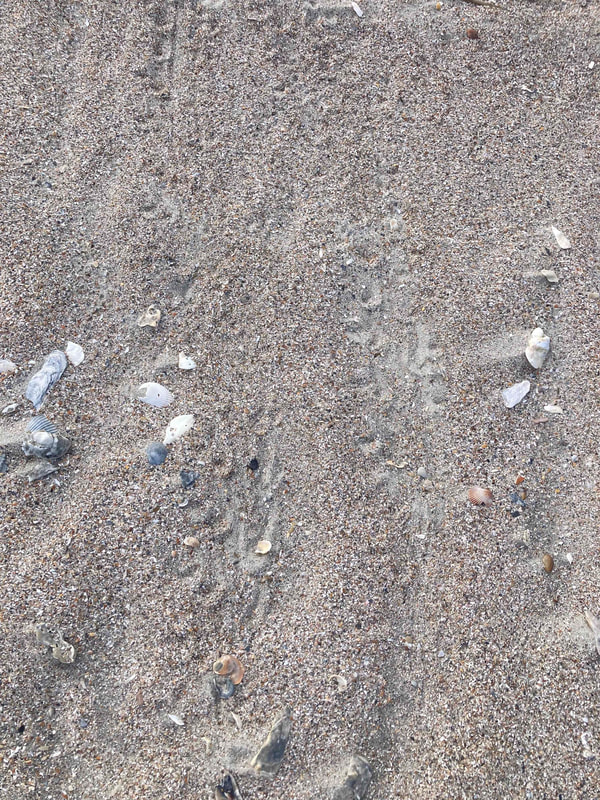
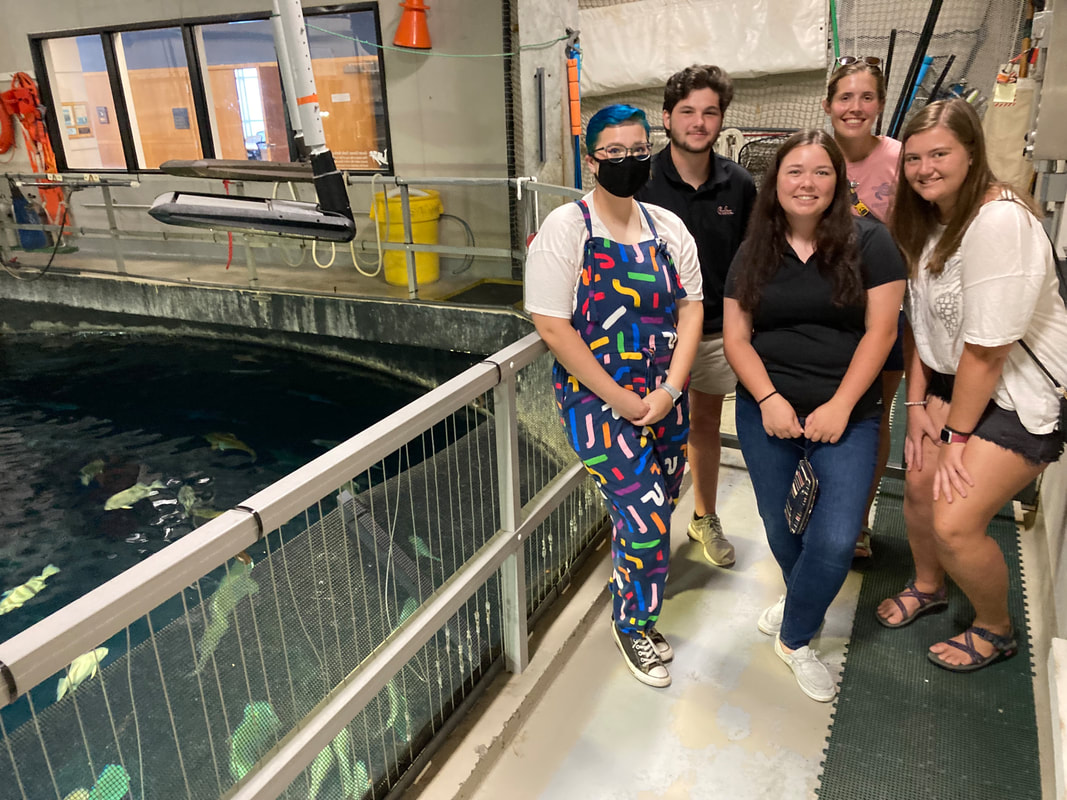
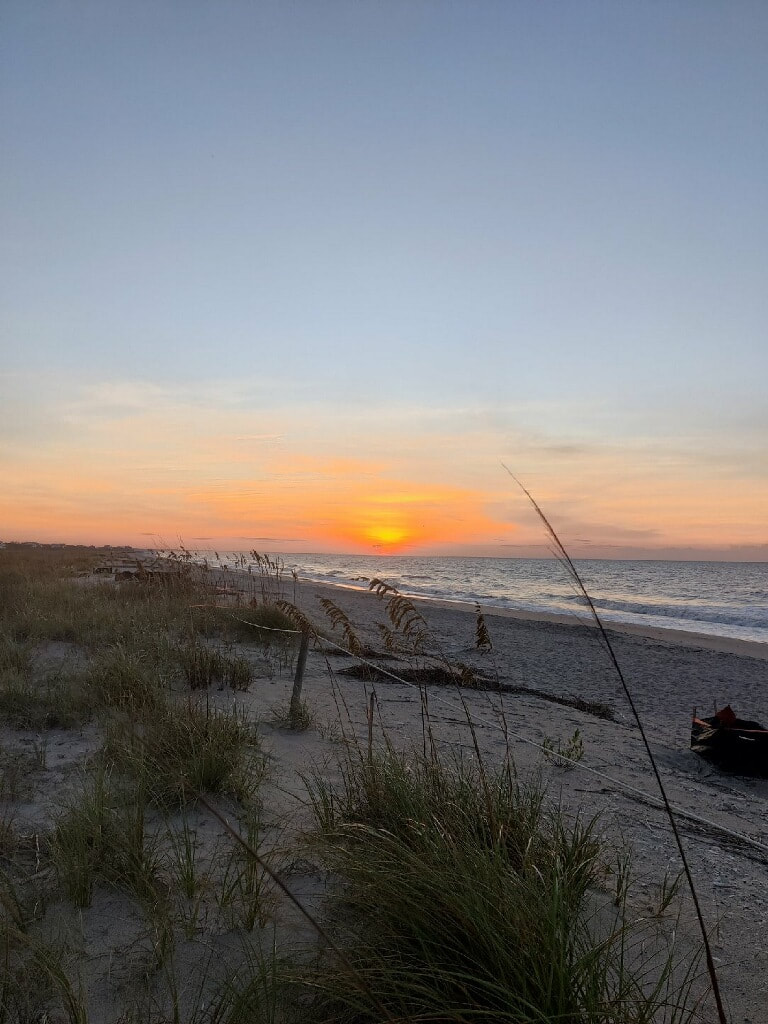
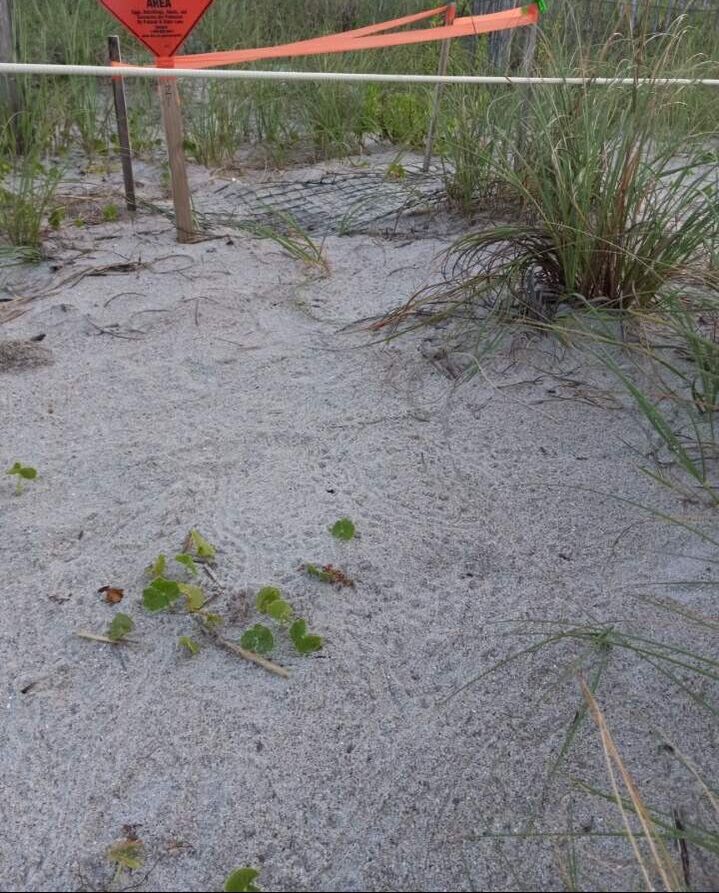
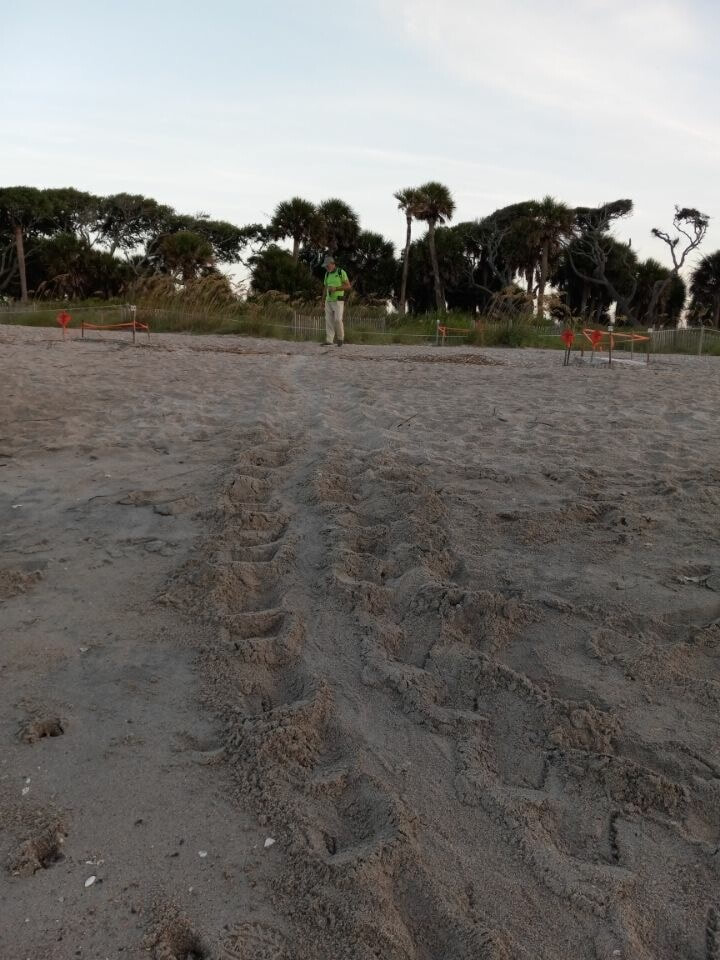
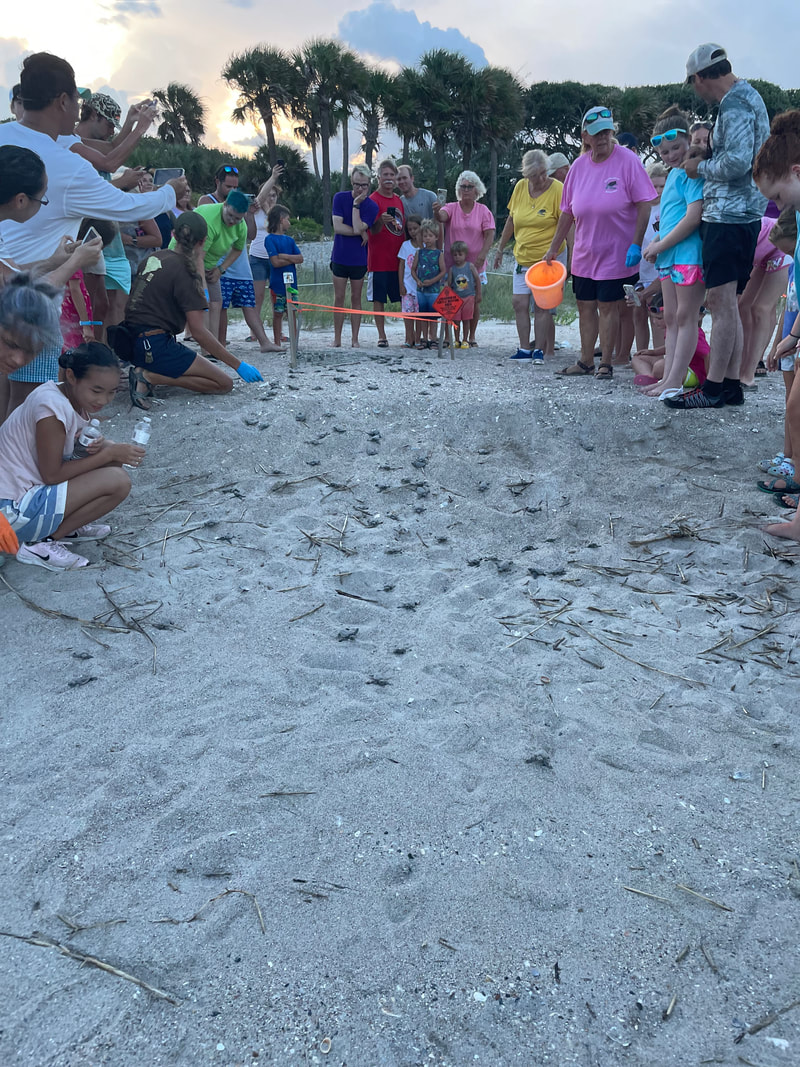
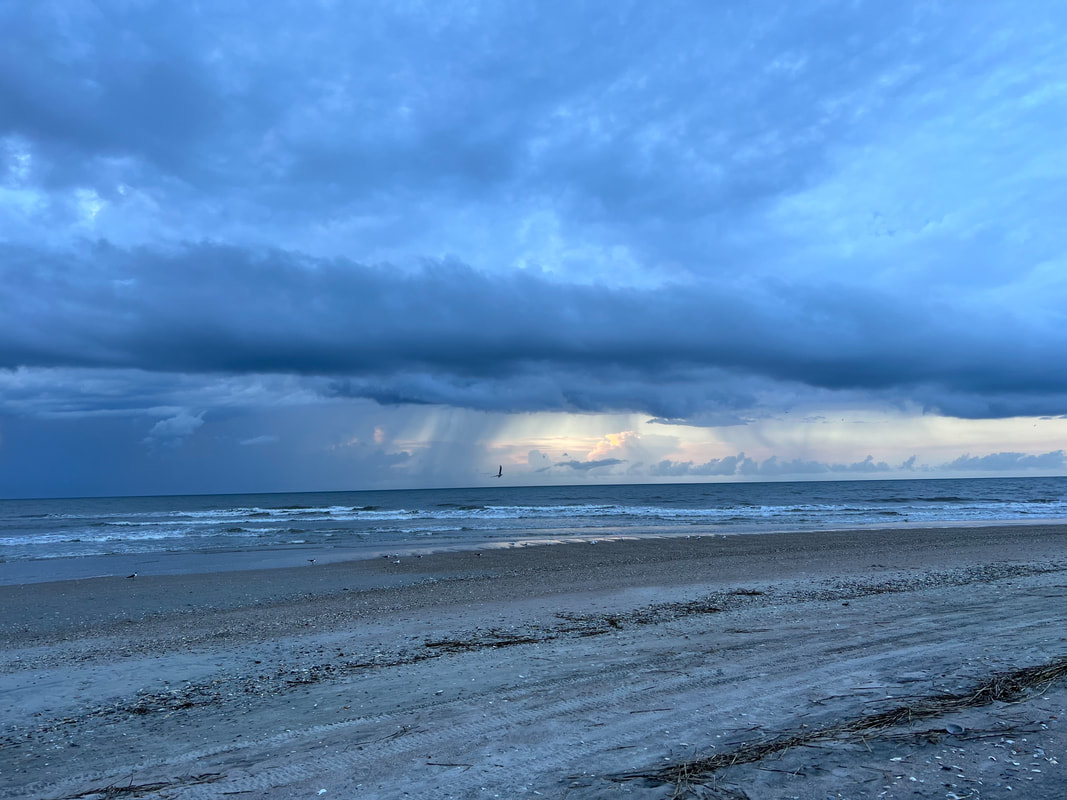
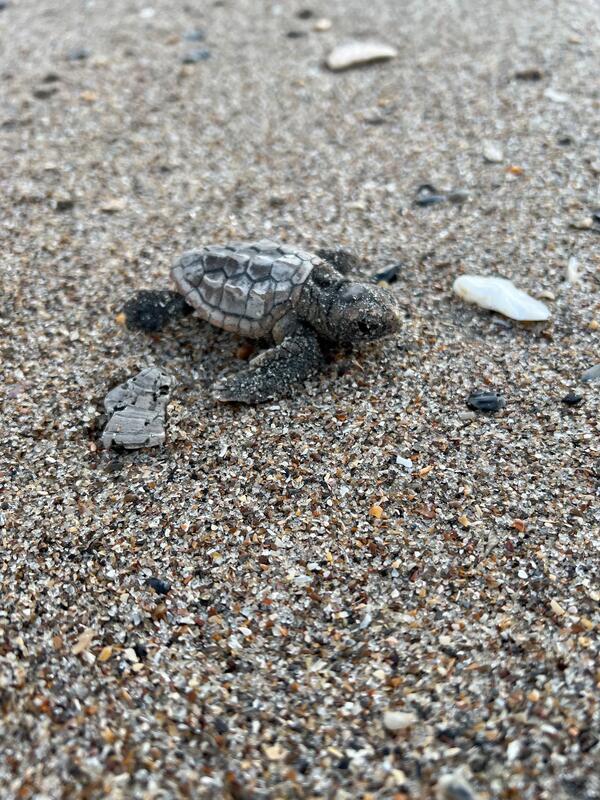
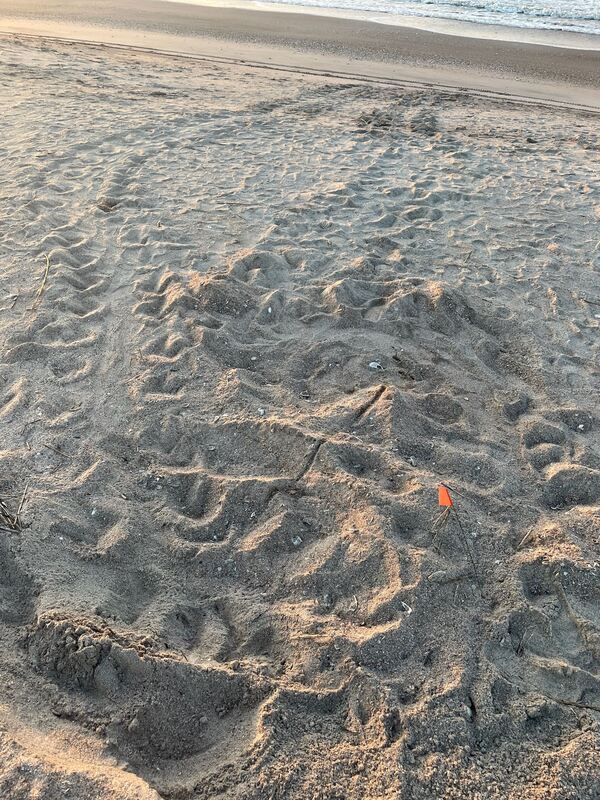
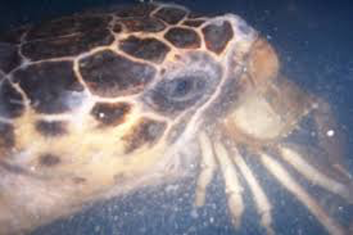
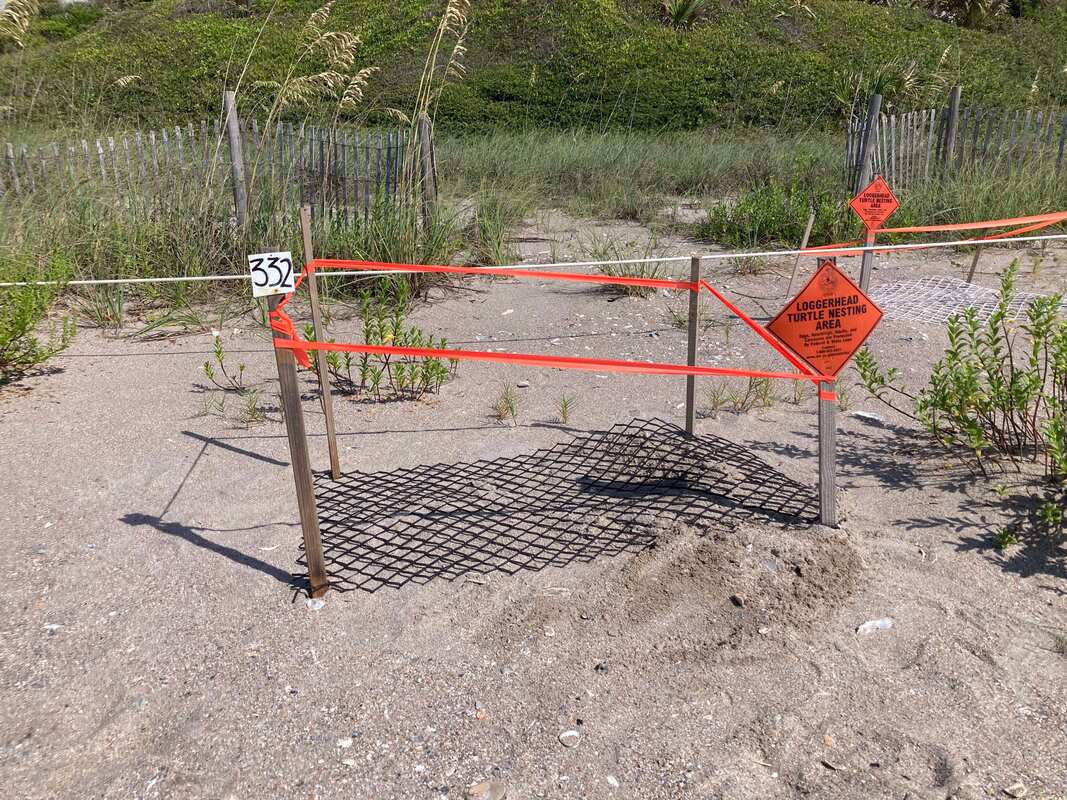

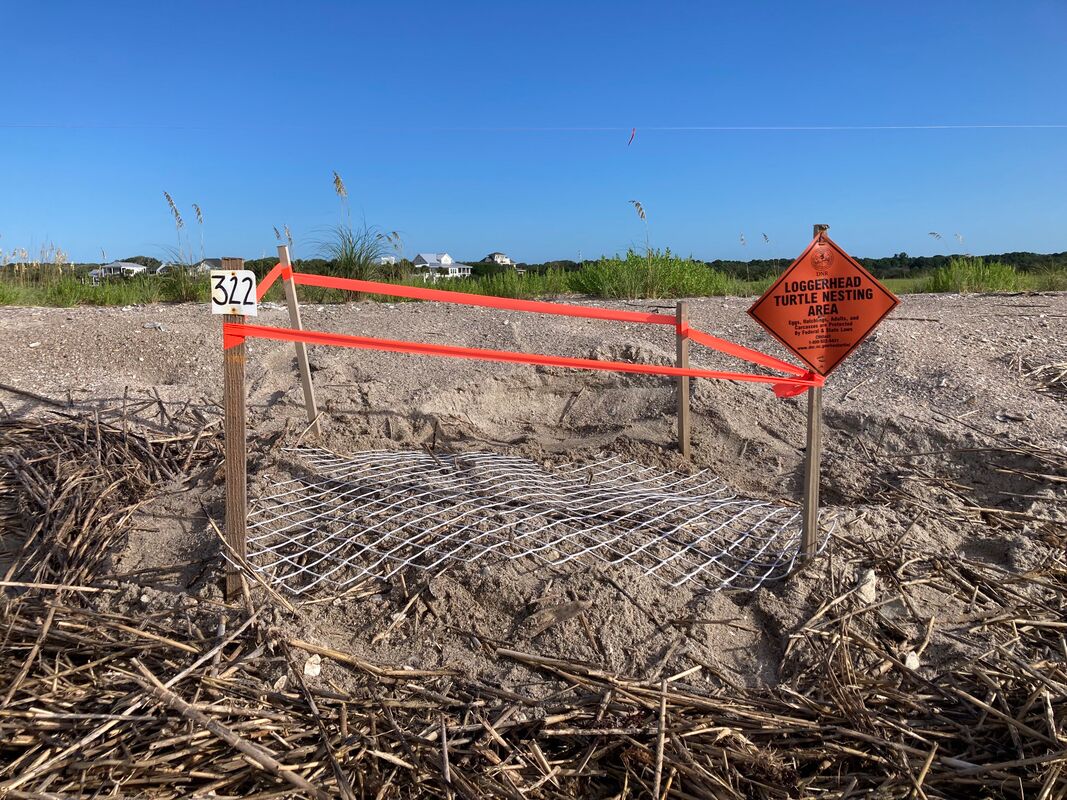
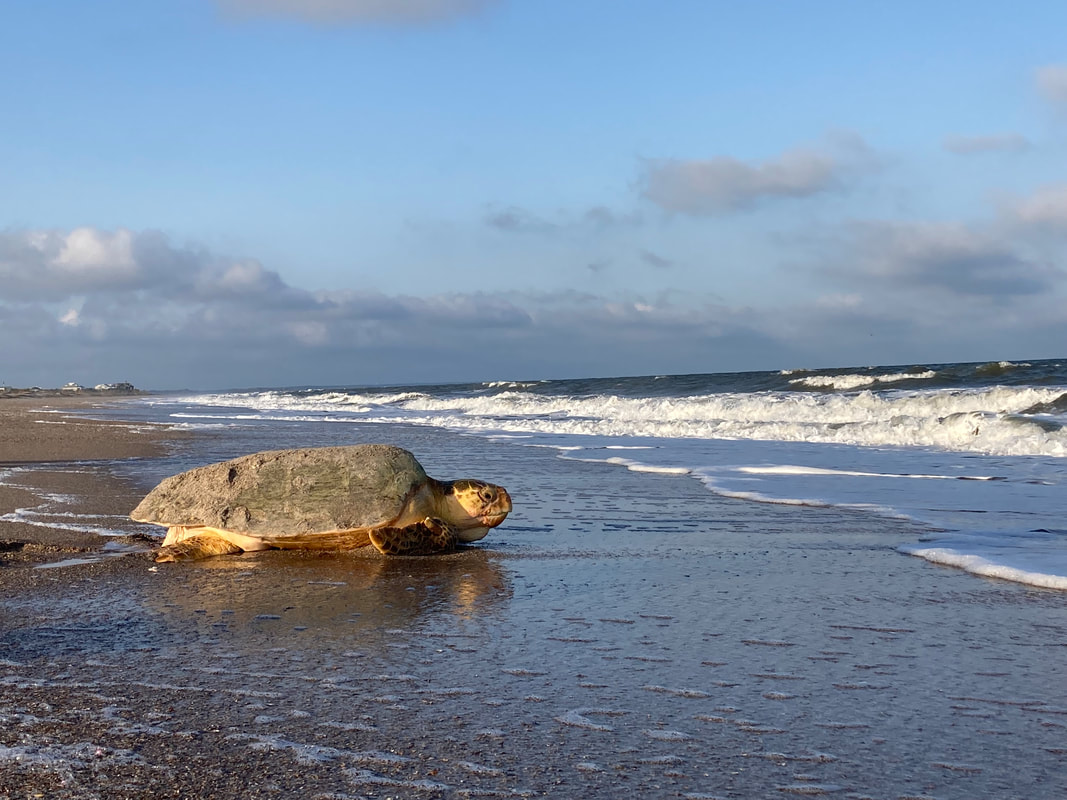
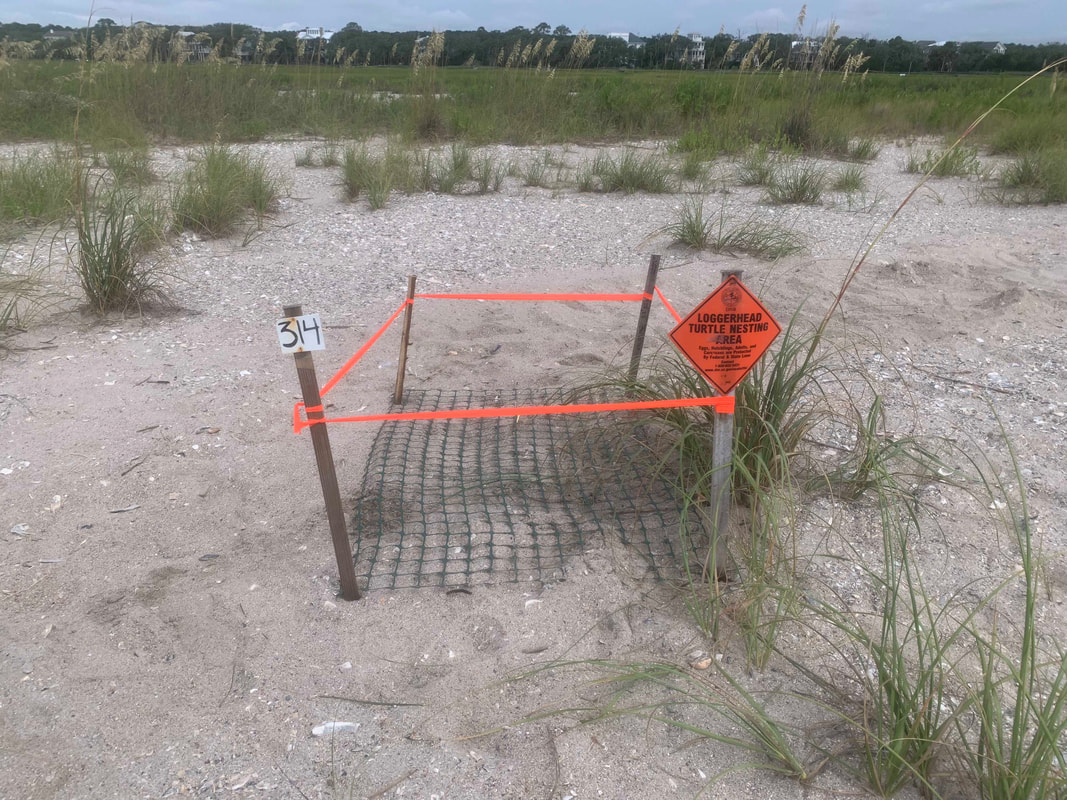
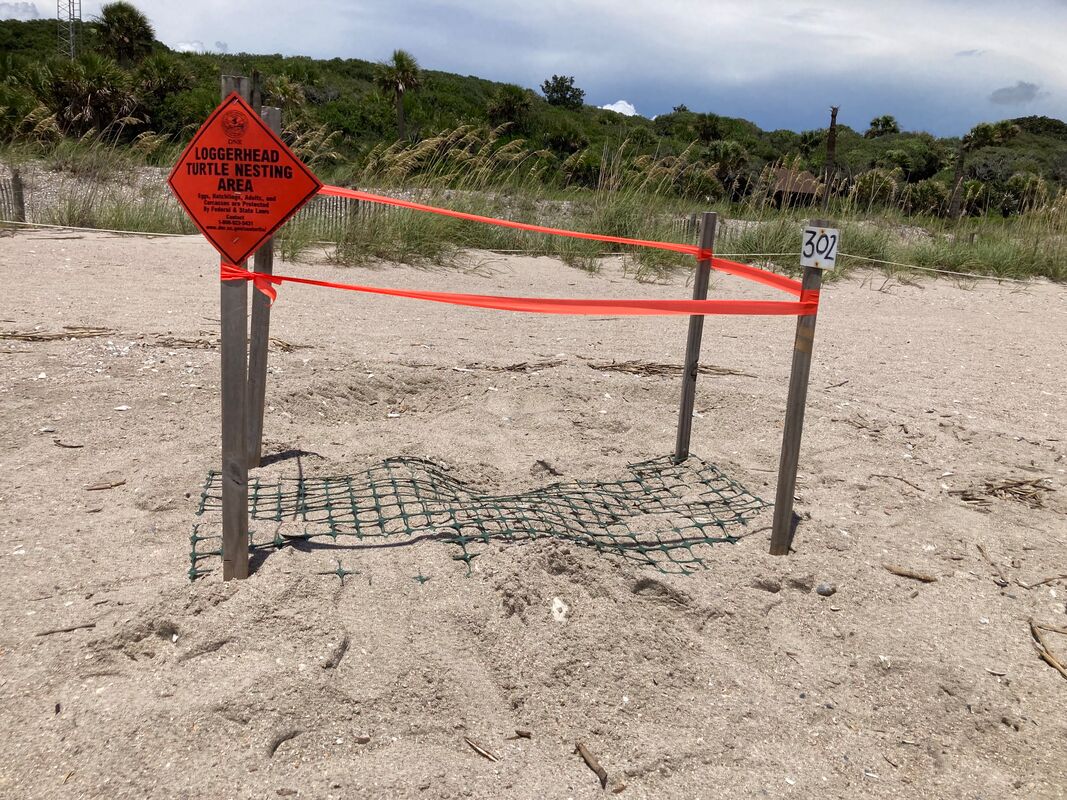
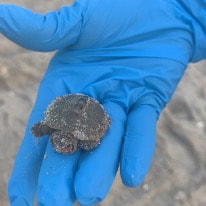
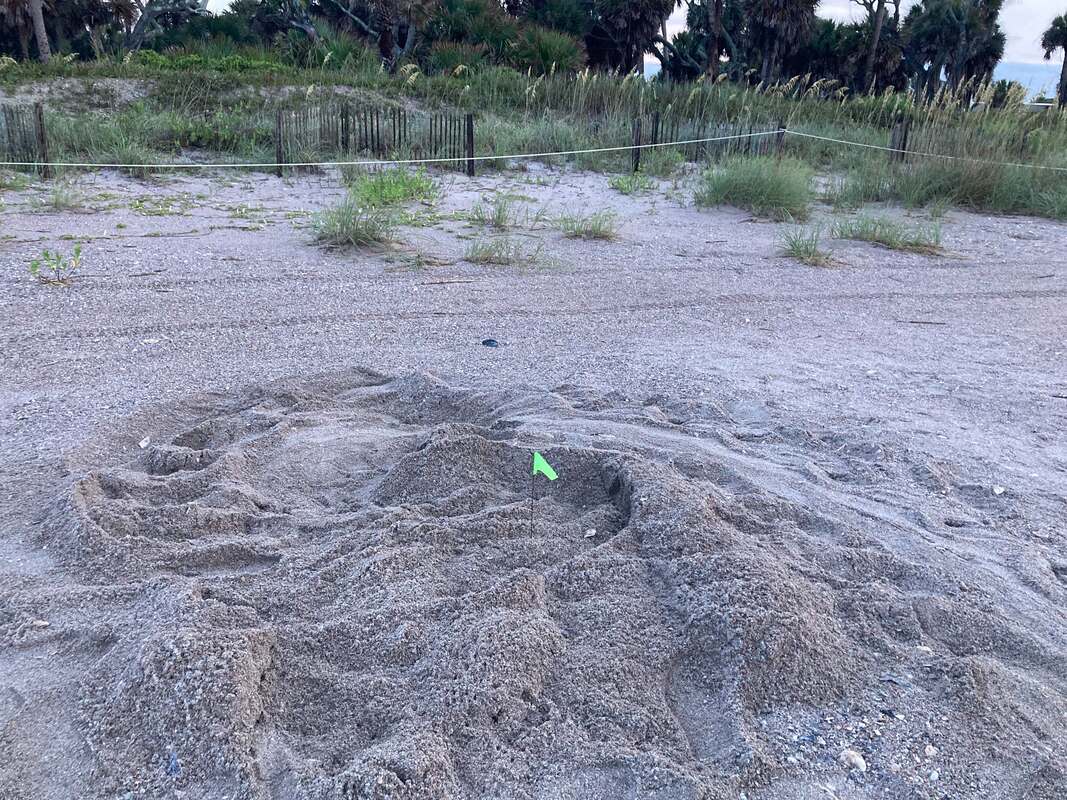
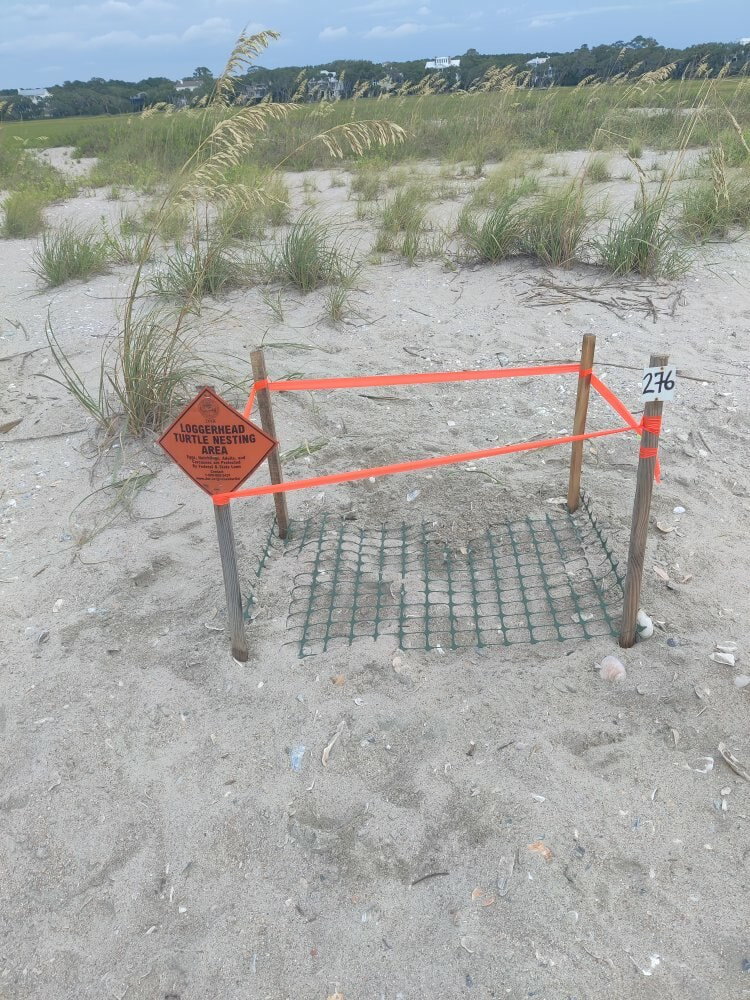
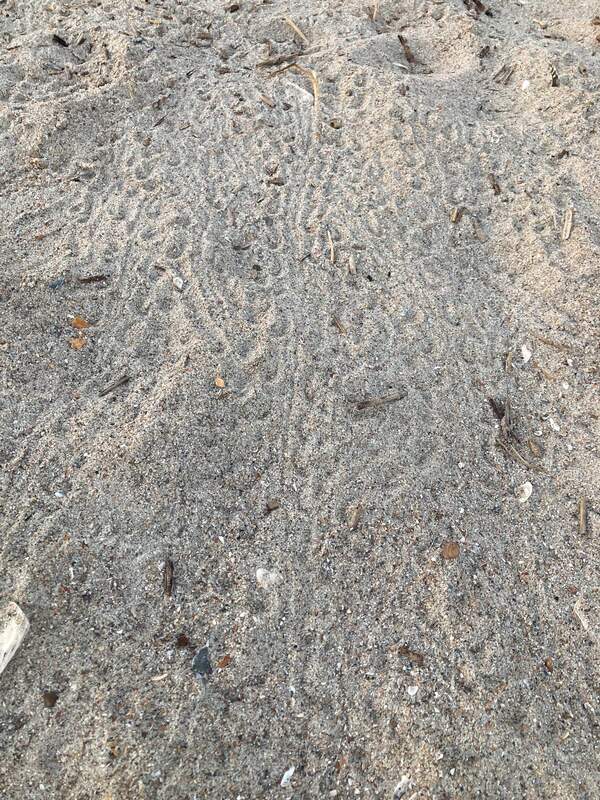
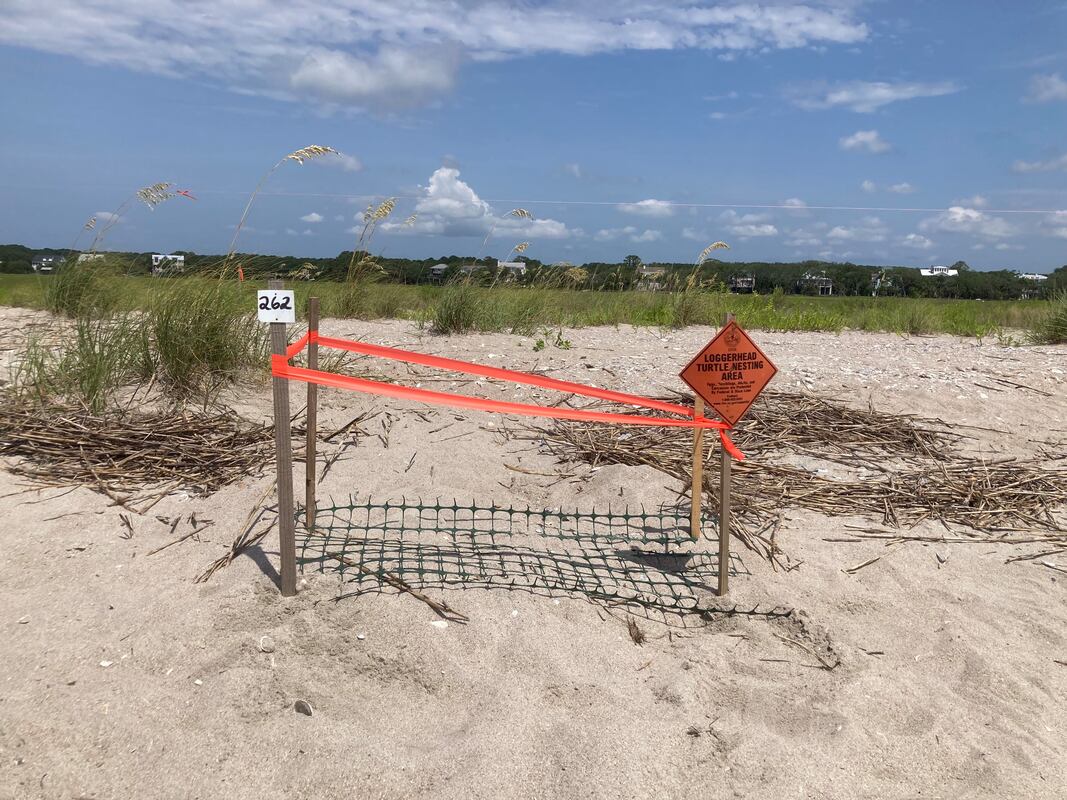
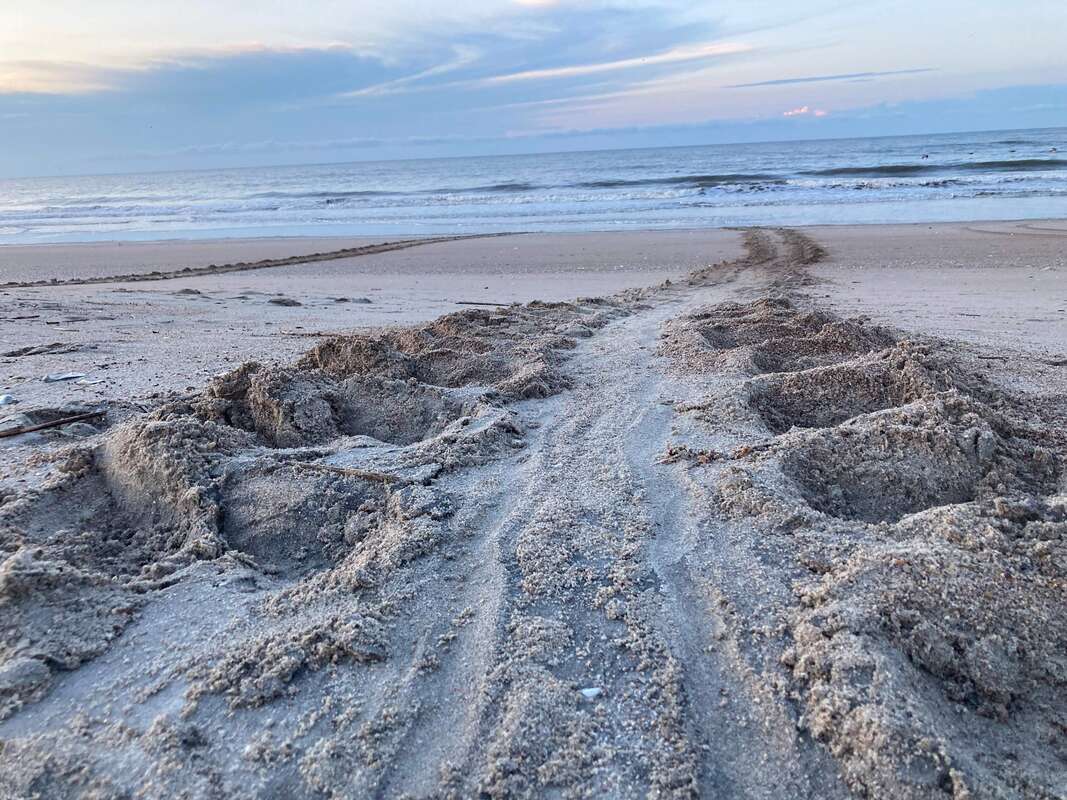
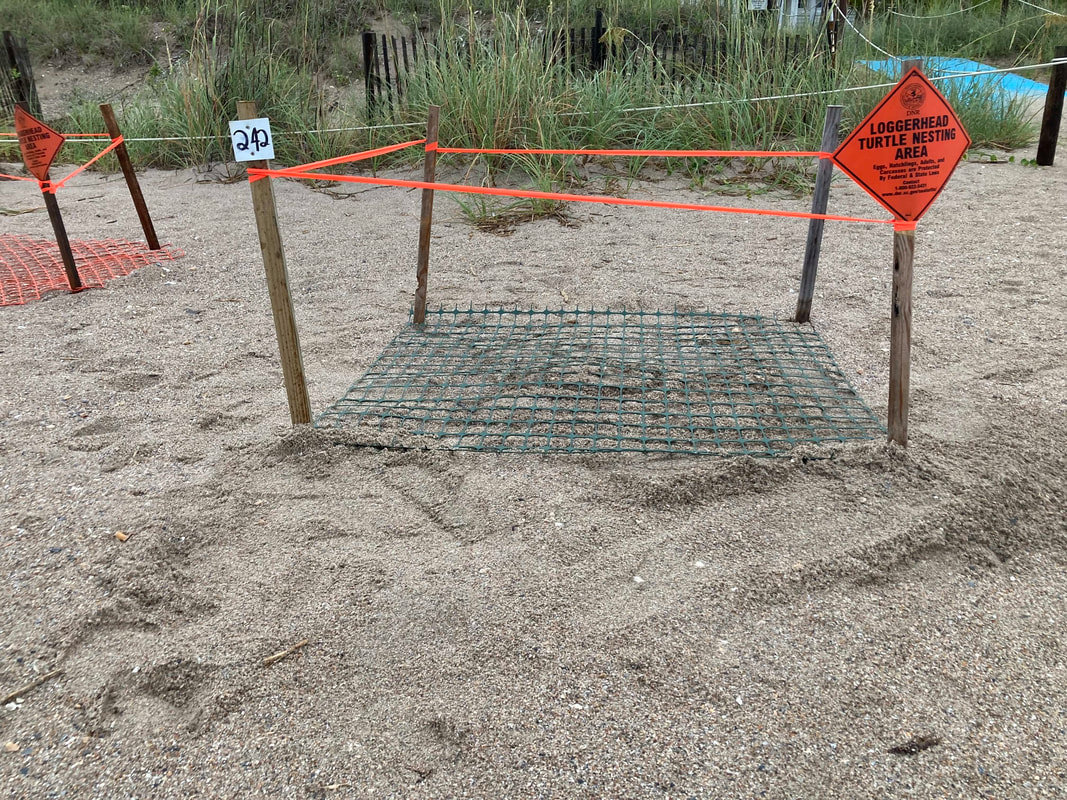
 RSS Feed
RSS Feed